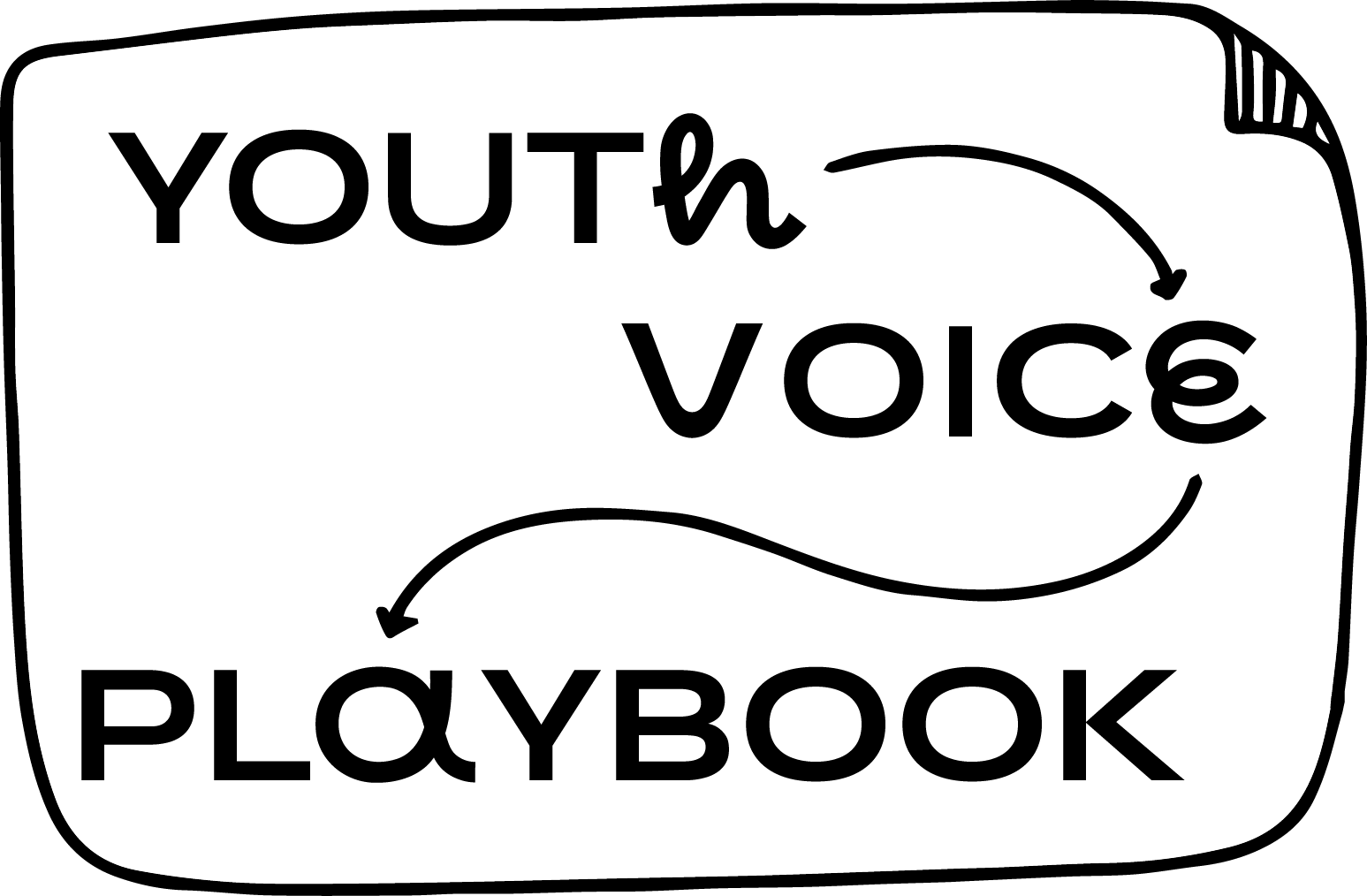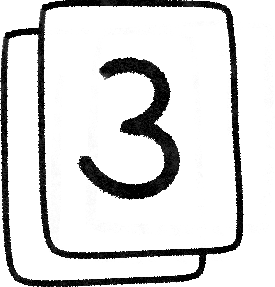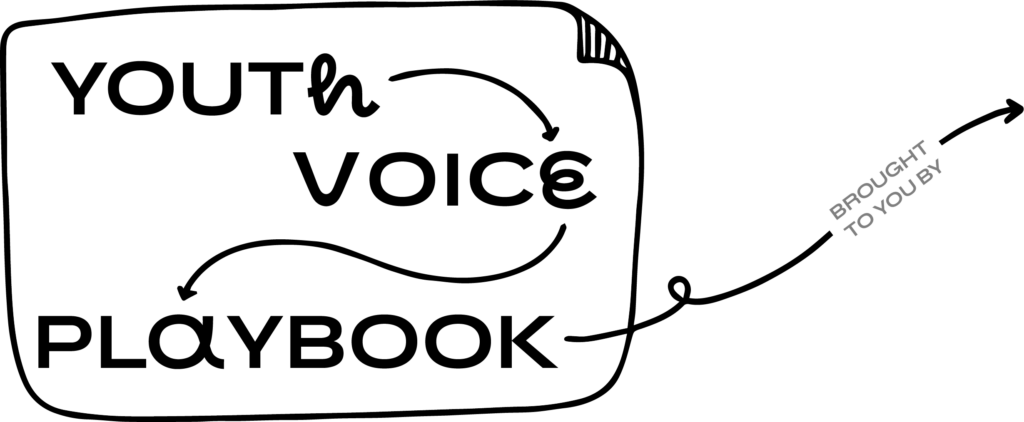Well, I finished my project…
…check that off that list!
I wonder if those teens will care…
…what I did with that feedback.
Wow! That was a HUGE success!
Who should I thank or tell about it?
You’ve made it so far and now we will discuss how to close out the project with young people in an affirming and empowering way. We also will cover how to share your work with the public in a way that captures and showcases your work with youth!
Whether young people are involved in the very early ideation stages of a project, in analysis, or at every step along the way, it’s important that they get to see the results of their hard work and expertise culminate at the end of the project. One CLIPster shared with us that closing the loop “brings light to the value of open communication and collaboration” when working with young people. This chapter shares ways to do that meaningfully, both with the youth directly and with the public.
One note: doing this well means you might have to actually DO the things that young people told you to do, and then show them what you changed… and even let them give you more feedback on your new version. It might even convince you to engage young people in the next stage of your project too, which is a good thing!
Closing the loop with youth
First up, circle back.
The youth that participated in the session are likely very excited to hear about takeaways and the ways their input changed your project! Make a plan to follow-up with your finished product, next steps, or at least to share in the final session how their insights have shifted your thinking and understanding. The more tangible, the better, although this can also be informal, like simply sharing out loud something like “Some of the ways our thinking has evolved based on what you’ve shared are…” More examples of how to do this can be found in chapter 7 and chapter 8.
Fact check your quotes.
Make sure quotes are accurate and you have permission to share them. If you plan to use stories, quotes, or explicit insights from your young people, make sure you let them review those to be sure you are accurately representing their words and experiences. You should also ask them if they want to remain anonymous or use a self-selected pseudonym. Keep in mind, the nature of your IRB (if applicable) might stipulate if or how you can reach out to participants and what you can share publicly from them, so be sure to check that first.

Example from Center for Digital Thriving
Another example from the research supporting Behind Their Screens: when we were writing a chapter on how social media can amplify social conflict, we recalled a powerful story shared by Maeve (self-selected pseudonym), one of our youth advisors. Maeve recounted a painful experience in 7th grade when she was involuntarily “outed” to her school peer group. The story was a powerful example of how social media can amplify the audience for and pain of a privacy violation. To be sure, our youth advisors had all already consented to have their (de-identified) voices, perspectives, and stories represented in our book. But we knew that Maeve’s story needed special care. We sent her the draft text of her story for her review, edits, and approval (or disapproval) before including it in our chapter, using a secure document transfer so the story itself wasn’t in the body of an email that would live in any of our inboxes. Maeve appreciated the care we took to ensure that her story was represented in a way that felt comfortable and safe to her and reiterated her permission for us to include it.
It’s okay to share a draft.
At this stage, your project might not be totally finished, and that is okay! The step of “closing the loop” is not to show the finished product or project, but rather to show the insights you garnered from your session with youth. This doesn’t have to be super formal. For example, if you asked for feedback on an early survey, you can consider showing tracked changes from before and after youth input; bonus points if you highlight specific areas of the project that your youth changed! If you engaged in a codesign session for an early product prototype, you can show the before and after experiences through a series of screengrabs, highlighting key changes that were informed by youth. This is a valuable way to strive for collaborative work and avoid extractive approaches.. You might be opening yourself to more feedback – and that is the point! Even if you can’t integrate further changes right now, you might find those comments useful for your discussion section, your next study, or other future projects.

Example from Hopelab
As part of one survey development process, we hired an independent evaluator to get feedback on a close-to-final draft version of the survey from a group of participants who had helped to develop it. The evaluator showed participants items that had changed based on their and others’ input and asked questions like “How did you see your input or the input of other young people reflected in the survey? How much did your expectations of giving input on the survey design match what you see in the final product? What would you have liked to be different?” Overall, young people reported seeing their impact reflected in the survey, and felt that it improved its quality. This check also pointed to valuable areas where Hopelab still needed to probe further before releasing the survey–for example, the extent to which young people had a shared understanding of certain terms like ‘telehealth.’
Sharing your findings externally
Eventually you’re going to share your findings with the wider world! We believe that youth should have the opportunity to be involved in the publication, presentation, and dissemination of results. Young people are likely way more connected than you are to the digital world- they might have cutting edge ideas to spread the word about your project! That said, sometimes media requests and dissemination work can be really demanding, and you’ll want to avoid overtaxing the young people who were involved in your project. Additionally, sometimes involvement at this stage of a project can be exposing for youth, because even if their quotes are de-identified, by participating in public reporting, people in their networks may figure out what stories they shared. We mention all of these considerations simply as food for thought; there is no one right or wrong way to involve youth in this process – and the best way to decide is to ask them!
Before you publish…
Before publishing, offer youth who were involved in the project an opportunity to see the final product. The framing obviously depends on the nature of the project – e.g. high school students might not be the right reviewers for an academic journal article, so you may not always ask for feedback at this stage – but it’s still a sign of respect to show them the final product, and it can also be an important step to make sure that the content and writing is accessible. You could also consider involving your youth partners in ideating on the title of your work or product, creating artwork to accompany the project, or designing the finished version.

Example from Hopelab
Hopelab, in collaboration with CenterLink and It Gets Better Project, worked with LGBTQ+ young people to co-create imi, a freely available web-app designed to help LGBTQ+ youth explore and affirm their identity and learn practical approaches to cope with stress that are helpful, relevant, inclusive and joyful. Hundreds of LGBTQ+ young people contributed to the direction and design of imi. For example, in early foundational stages of tool development, young people gave critical feedback on early prototypes that focused on structured positive psychology exercises. This feedback, and subsequent co-creation workshops with young people, led the Hopelab team to pivot the content of imi to deeply acknowledge minority stress and intersectional identities, as well as LGBTQ+ joy, and pivot the design to a series of topic-based guides in a choose-your-own adventure style. In later stages of development, this codesign took the form of paying LGBTQ+ youth content creators to contribute written stories, audio-recordings, and original artwork to the tool, which has been used by over 100,000 people across the world.

Example from Center for Digital Thriving
We like to send personal thank you notes to youth who have meaningful ongoing involvement. For example, when we wrote our book Behind Their Screens, we sent each teen advisor a copy of the book with a personalized thank-you note in it and we shouted them out in the acknowledgements (with their and their parents’ permission, which is key because of identifiability).
Ask youth how to share the work meaningfully.
Consider involving young people in this process through blog posts, social media content, etc. – they will be able to reach a different audience than you or your organization will. In particular, think about reaching out to other young people who weren’t directly involved in the project to help share and react to the findings.

Example from Hopelab
When sharing the results of Hopelab’s national survey on youth social media use, our communications team reached out to young people who were not directly involved in the research to help contextualize the findings. For example, Gael Aitor, the 20 year old creator and host of “Teenager Therapy”, a teen mental health podcast, blogged about how social media provides young people with valued access to informal mental health support and community connection. This blog also gave Gael an opportunity to highlight a need that wasn’t directly addressed in the report, specifically the need for ‘third-spaces’ outside of the mental health care system and social media where young people can focus on healing. This practice of inviting young people to share their reaction to research can both make the research more accessible and engaging, and spark ideas for future explorations.

Example from Center for Digital Thriving
We love for youth to be co-authors or even lead authors when there are good opportunities for them to share findings in their own voices! One member of a teen codesign team wrote a blog post about insights from the project. In another instance, we worked closely with a high schooler, Zoya, who led a research project on TikTok; her research went through peer review and was published in an academic journal – with Zoya as first author.

Example from Character Lab
We have invited CLIP students to speak with us at conferences. Many conferences now have dedicated sessions for youth presenters, or for adult-youth partnerships; you can also simply apply through the regular channels and include your young people as collaborators. Although the logistics of bringing young people to a conference can be high-lift, especially if travel is involved, it’s a great way to truly center their voices in the way you share about your learnings, and often a great opportunity for them to build new skills and learn new things.
Keep in touch!
Keep in touch with the young people who were involved in the project! In the research world we often hear about opportunities for fellowships, conferences, guest blog posts, and opportunities to collaborate in research. The young people who participated in your project may express interest in staying engaged. When opportunities arise, keep these youth partners in mind and reach out to those who have expressed interest in keeping in contact. In the research world we often hear about opportunities for fellowships, conferences, guest blog posts, and opportunities to collaborate in research. The young people who participated in your project may express interest in staying engaged. When opportunities arise, keep these youth partners in mind and reach out to those who have expressed interest in keeping in contact.

Example from Character Lab
After students leave the CLIP program, we invite them to keep in touch with us so that we can provide letters of recommendation, references, and share cool opportunities. For many of them, CLIP was their first “professional” experience, and we’ve written many letters of recommendation that were used by CLIP alumni on college applications, job applications, and more. Some of our CLIPsters have enrolled in universities where we also have research partners, and one of them even asked for an introduction to a researcher at their university so they could join that researcher’s lab! Being able to help launch these students into professional experiences has been a great joy for our team, and it’s exciting to see how involvement in research experiences in their adolescence leads to an interest in continuing in this work throughout adulthood.
Resources, activities, and digging deeper

Stepping stones
Another shout-out to these great YPAR resources from UC Davis! In particular, stepping stone 8 is super relevant to the content of this chapter.

Guide to participatory dissemination
This manual from Spaces & Places shares some incredible tips and examples of how to position young people to share the findings of research they were part of, and also makes some important points about the value of doing so (especially on pages 3-4). Check it out!

Example of public acknowledgement
Here’s a way to share about your youth advisors and their involvement after a project concludes. (Note: this example is not from one of our organizations, and we don’t necessarily recommend sharing this level of identifiable information about your participating youth, but if you have permission, it’s a really cool way to give them credit for their work.)
What to Read Next
Wow. You’ve made it to the end of your project – and the end of this playbook! We hope it’s been a useful companion along the journey. We also hope that your experience doing research with young people has been a great one, and that reaching the finish line of this project has you excited to get to the starting line of the next one! So with that, let’s jump back to the beginning and begin again. 🙂




























